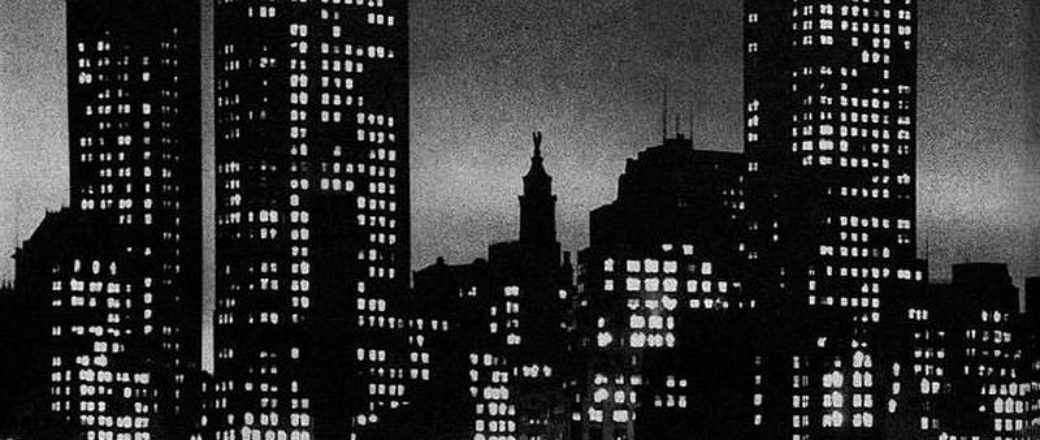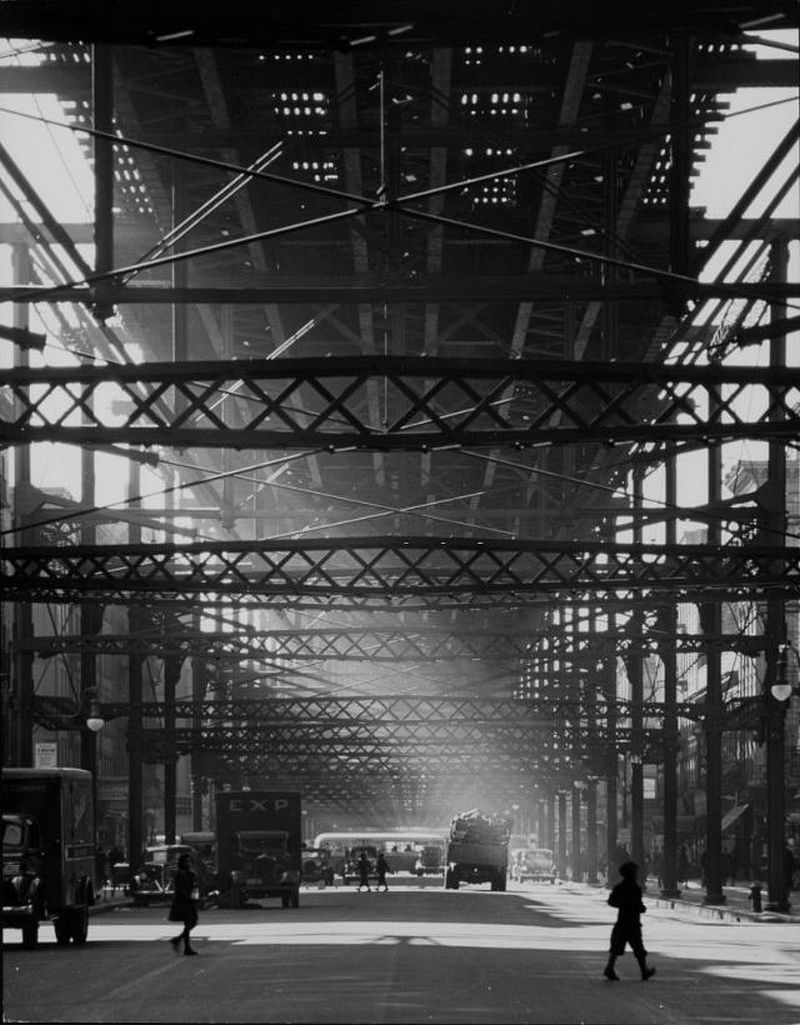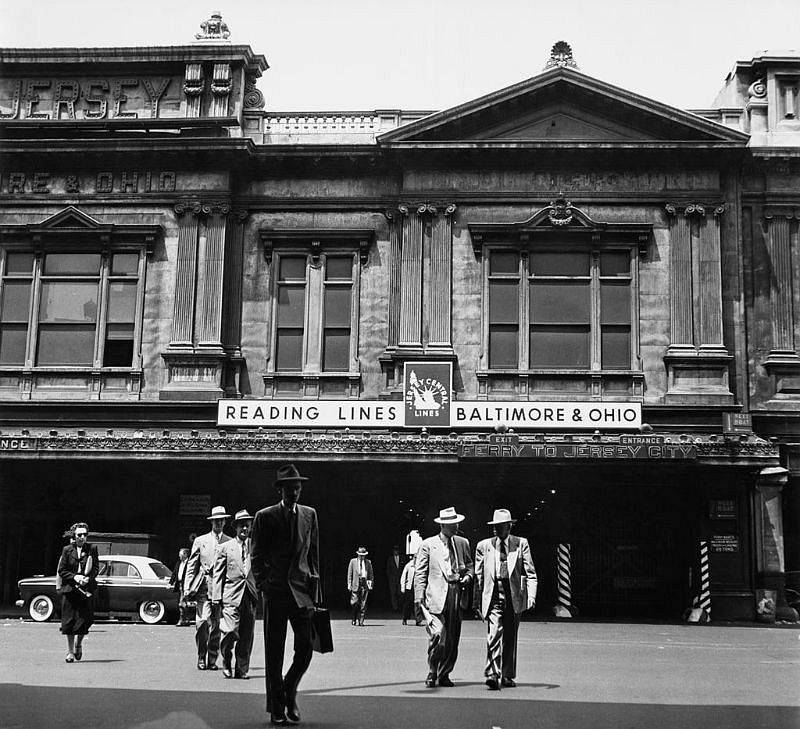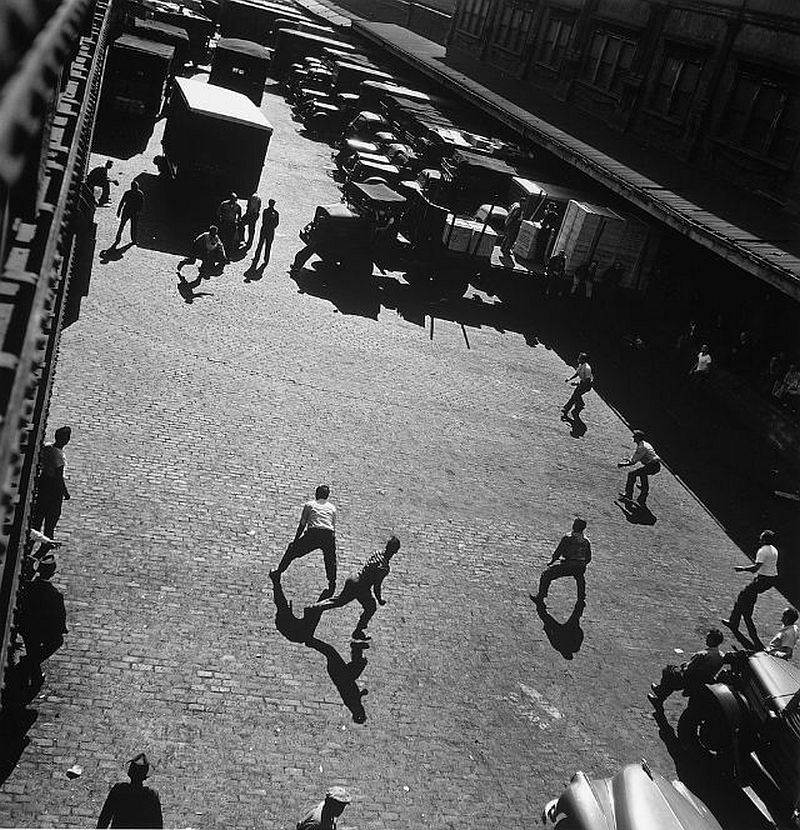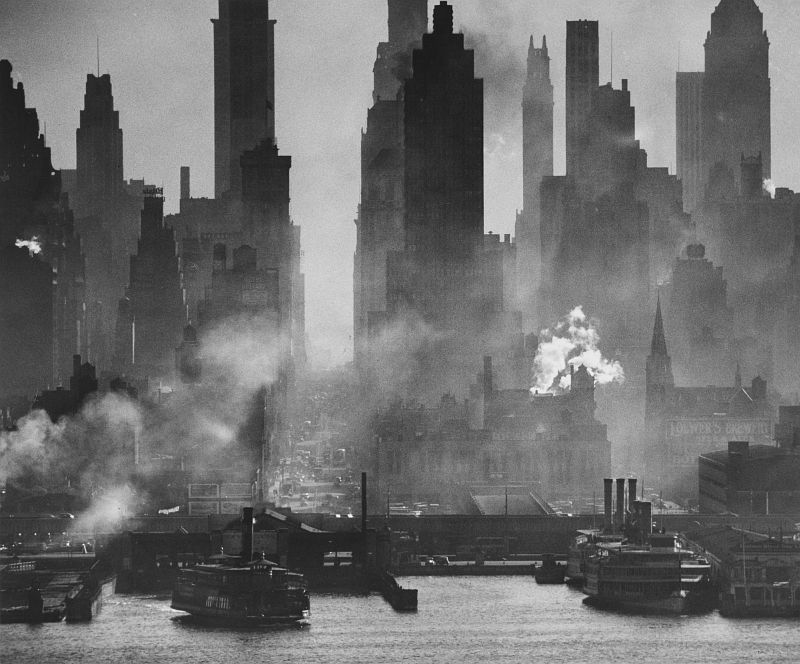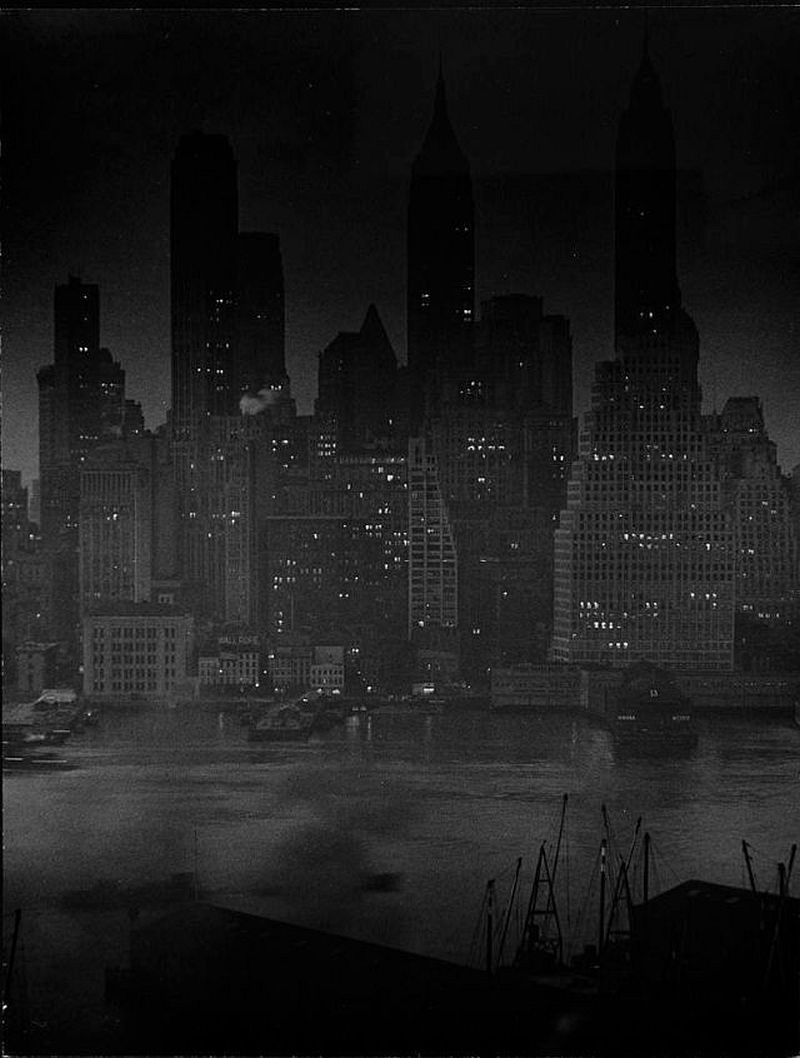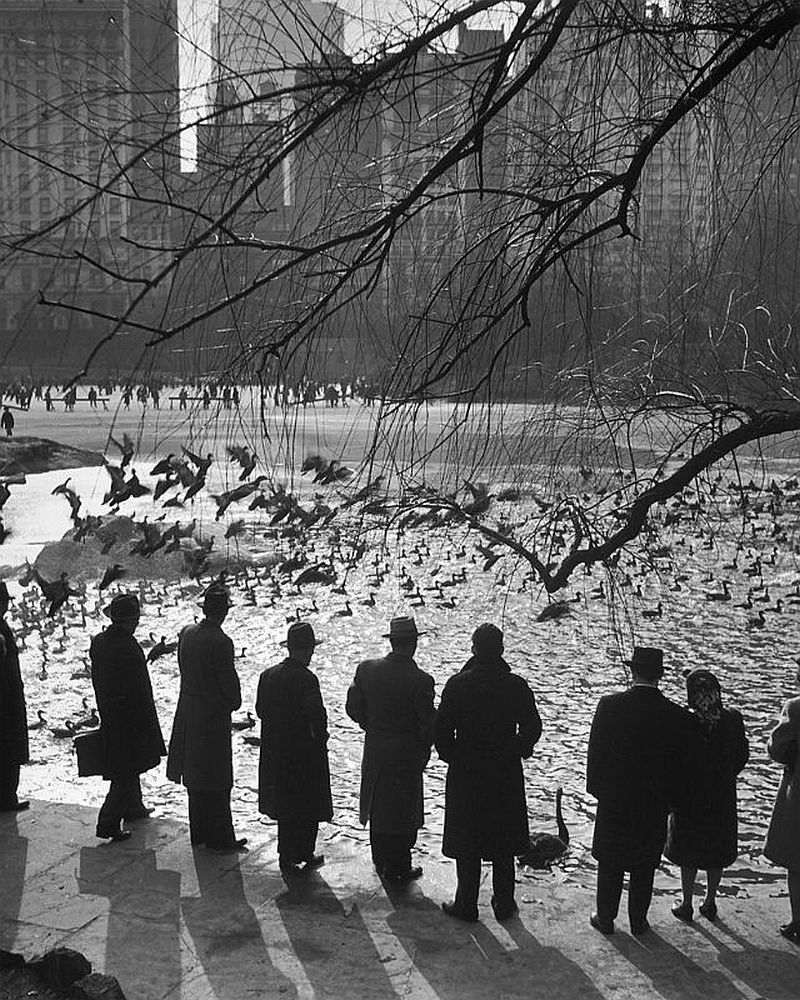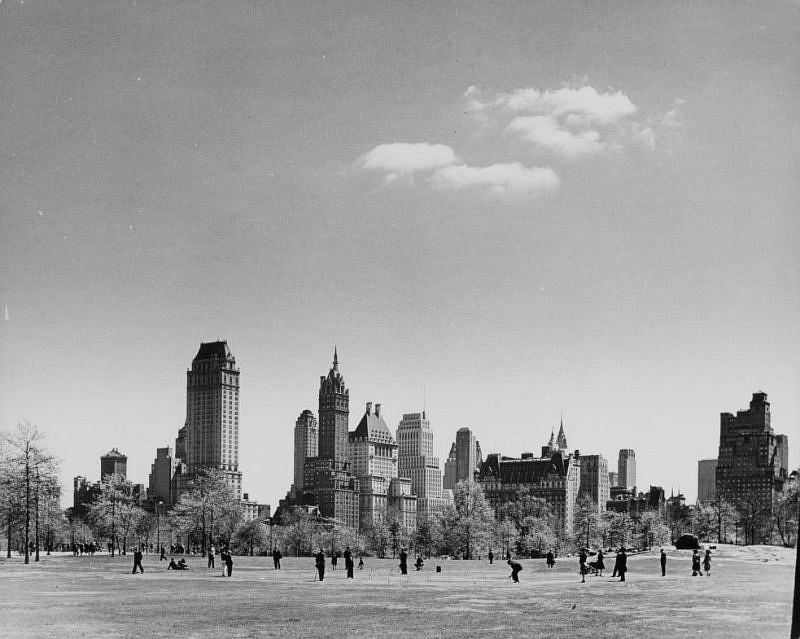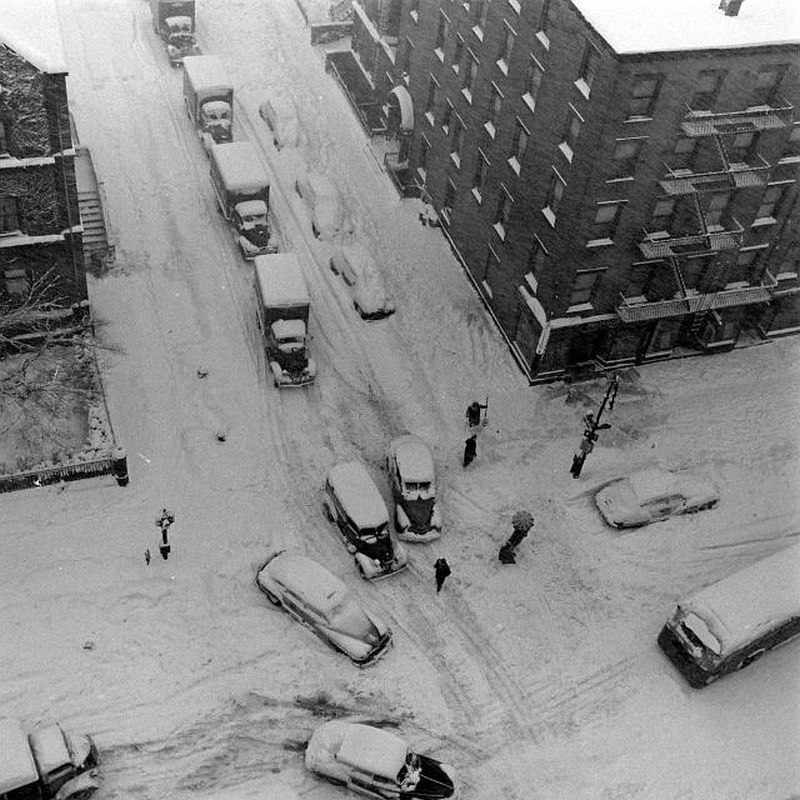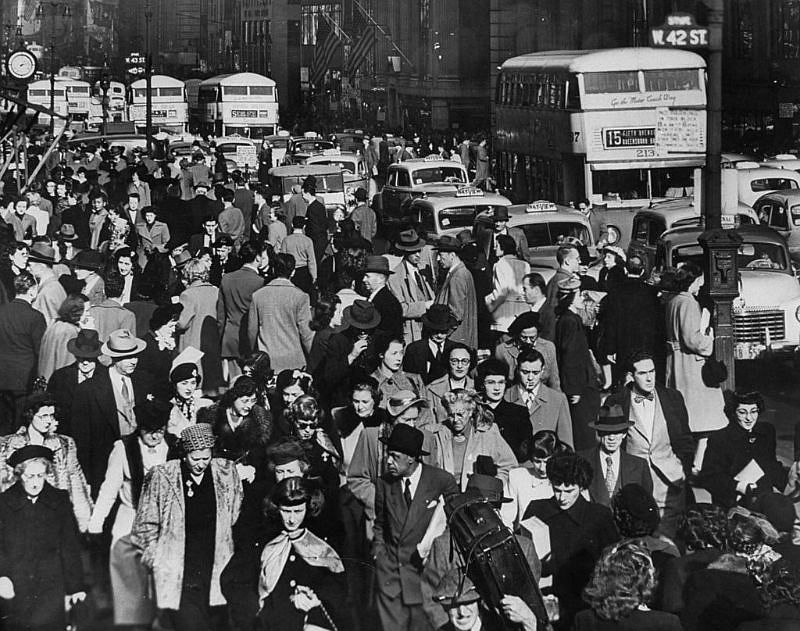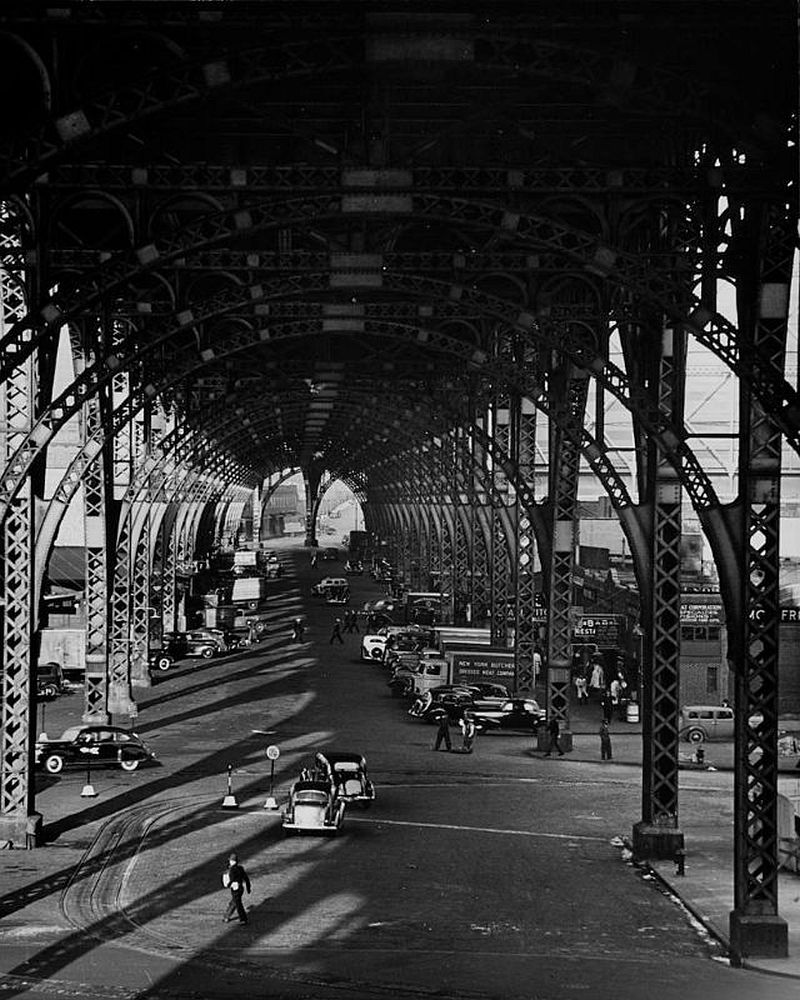In advance of World War II, in 1939, Andreas Feininger immigrated to the U.S. where he established himself as a freelance photographer. In 1943 he joined the staff of Life magazine, an association that lasted until 1962.
Feininger became famous for his photographs of New York.
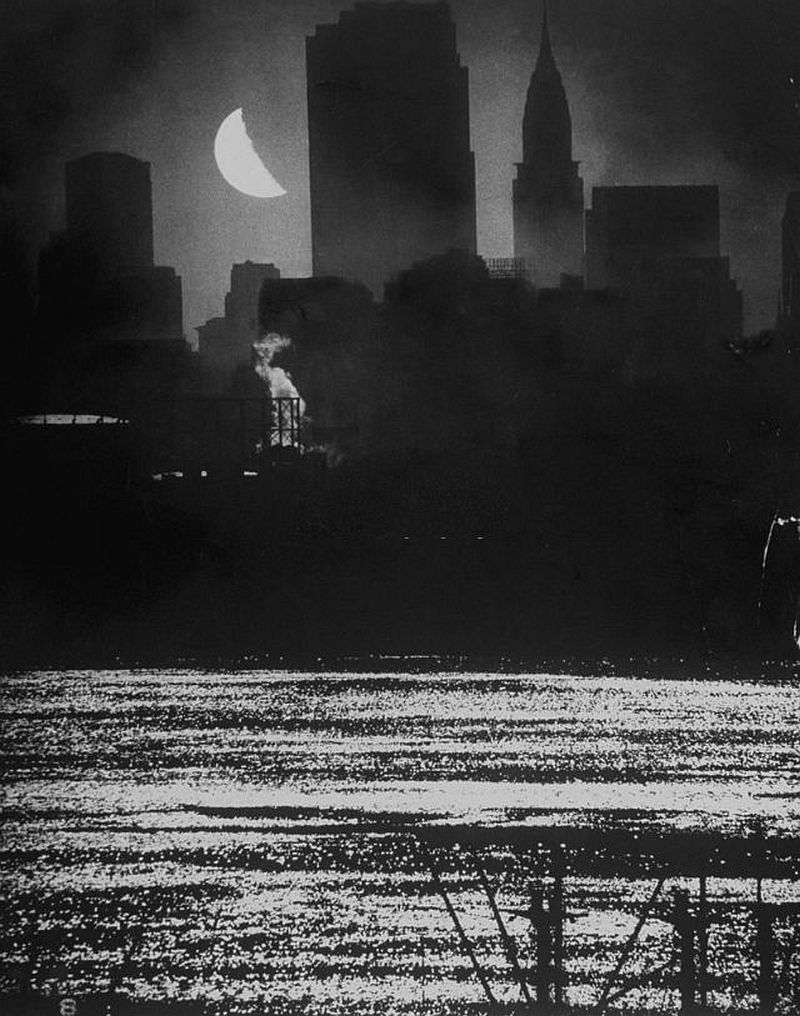
Moon shining over Manhattan’s RCA & Chrysler buildings as its light shimmers on the waters of the Hudson River, 1946.
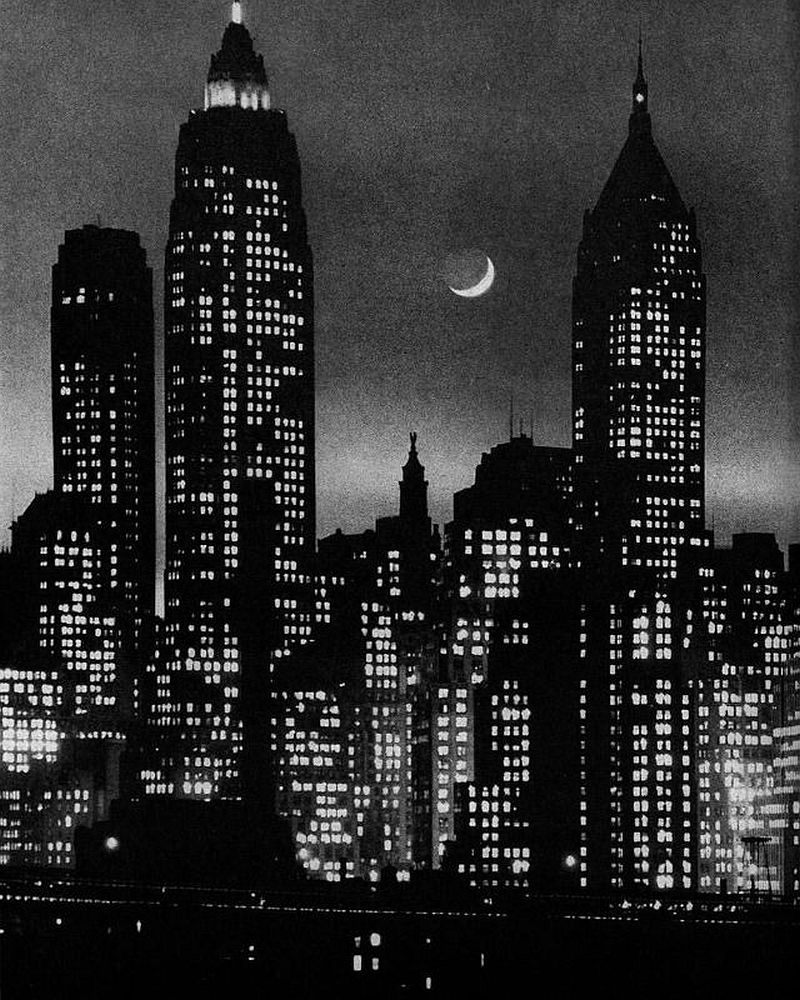
View of a crescent moon over lower Manhattan, 1946. The three tallest buildings are, from left), the City Bank Farmers Trust Building (Cross and Cross, completed 1931; later known as 20 Exchange Place), the Cities Service Building (Clinton & Russell, Holton & George, completed 1932; later known as the American International Building), and the Bank of the Manhattan Company building (H. Craig Severance, completed 1930; later known as 40 Wall Street and the Trump Building).

